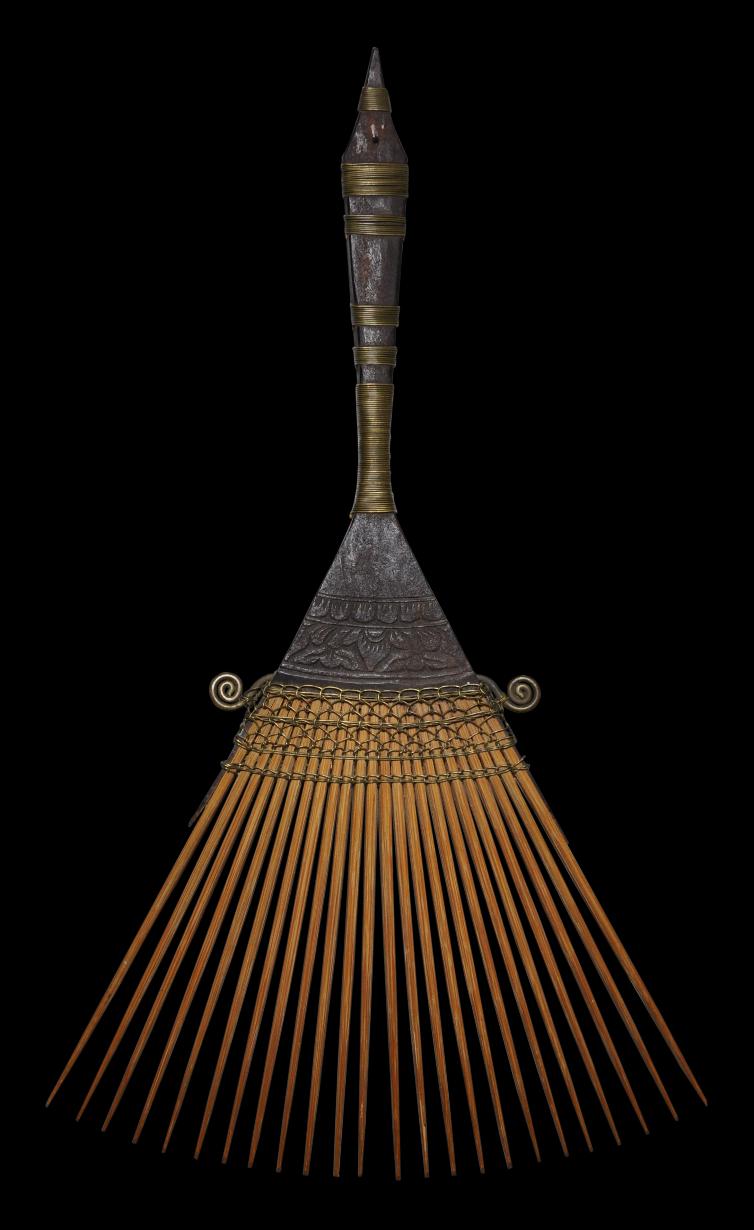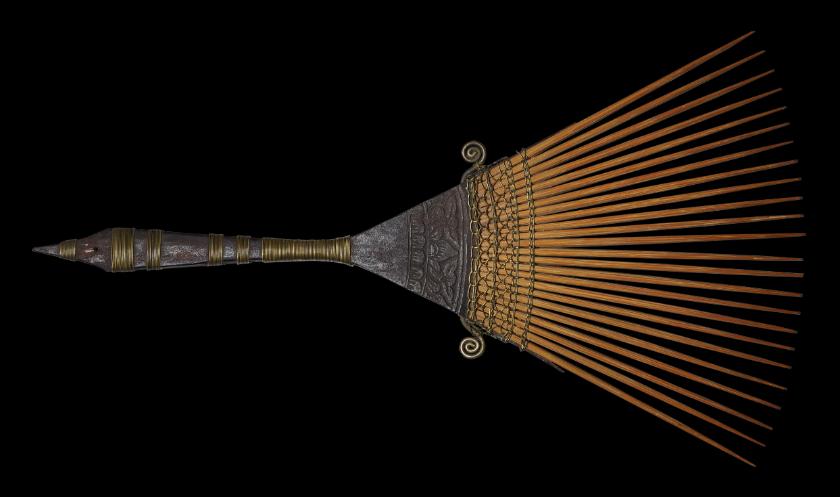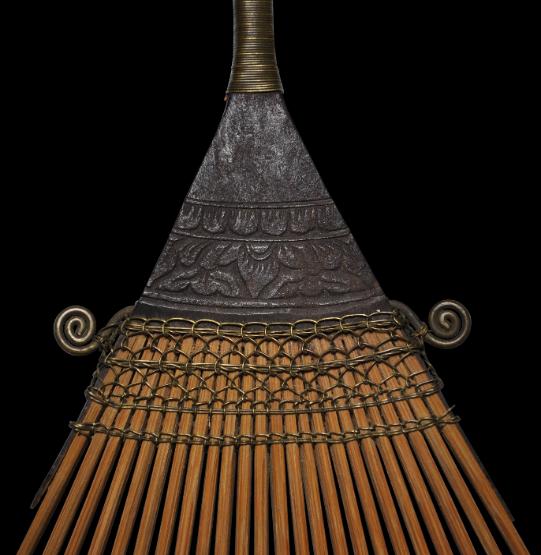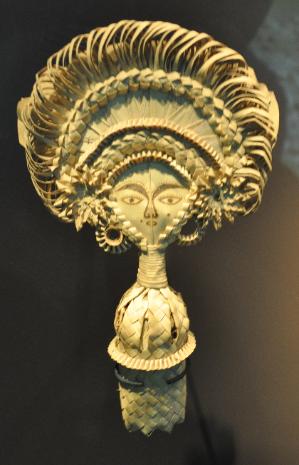
Balinese Comb
Bamboo, Wood & Wire Comb
Bali, Indonesia
early 20th century
length: 27.5cm, width: 15.5cm
This large, split bamboo comb from Bali, Indonesia, is particularly sculptural and striking. The form mirrors that of typical Balinese representations of the goddess of wet-rice cultivation Dewi Sri – a form known as cili – which is notable for its wide, fanned-out headdress, a form mirrored in the comb here.
The sticks of the comb are lashed together between two thin veneer plates and bound closely with fine brass wire; laced wire binds in a ‘button-hole stitch’ to secure the upper margin of the exposed splayed tines. Tight spirals in thicker wire adorn each side.
The upper faces of the comb are carved finely with a stylised lotus (
padma) motif on both sides – the sort of motif commonly seen on traditional Balinese silverwork and textiles (see for example, Reichle, 2010, p. 294-95).
The comb dates to the early 20th century and perhaps earlier.
It is in excellent condition and has a fine patina.
This actual comb is illustrated in Cruse (2007, p. 118). It should be noted that some authors have ascribed such combs to the Batak people of Sumatra or simply to Sumatra (see for example van Cutsem, 2005, p. 280, who described it as being from Sumatra.)
References
Cruse, J., The Comb: Its History and Development, Robert Hale Ltd, 2007.
van Cutsem, A.,
A World of Head Ornaments: Africa, Asia Oceania, America, Skira, 2005.
Ramseyer, U.,
The Art and Culture of Bali, Oxford University Press, 1977.
Reichle, N. (ed.),
Bali: Art, Ritual & Performance, Asian Art Museum, 2010.Illustrated:
Cruse (2007), p. 118, Figure 3.117.
Provenance
collection of Jen Cruse
Inventory no.: 2634
SOLD




An image of Dewi Sri, from Bali, and woven from palm leaves. Photographed in the Rijksmuseum Volkenkunde in Leiden in September 2014.

